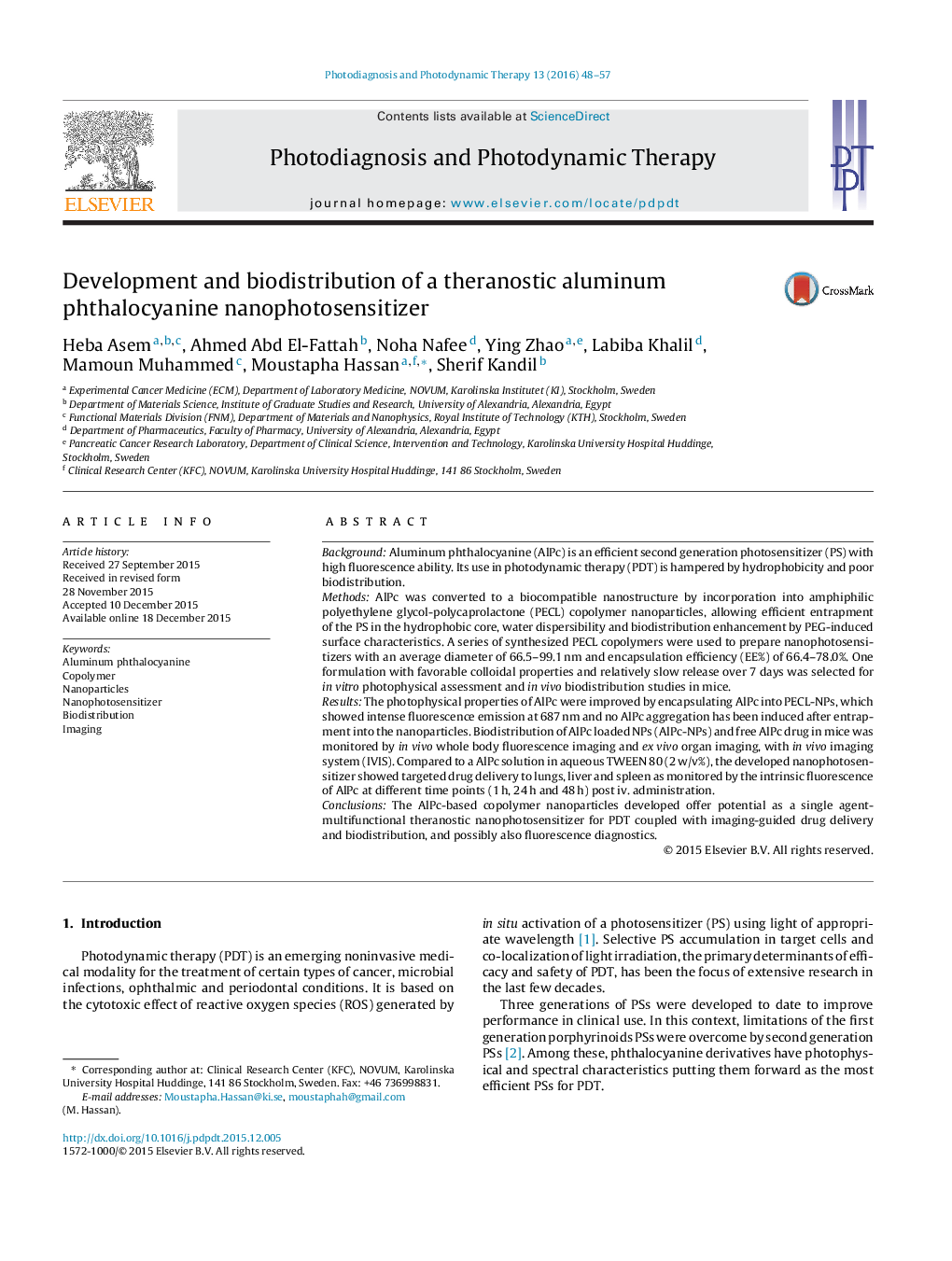| کد مقاله | کد نشریه | سال انتشار | مقاله انگلیسی | نسخه تمام متن |
|---|---|---|---|---|
| 3817629 | 1597729 | 2016 | 10 صفحه PDF | دانلود رایگان |
• The amphiphilic PECL copolymers were used to develop nanocarriers for AlPc.
• AlPc was incorporated in the PECL with a relatively high EE ranging from 66 to 78%.
• AlPc release was complete in 7 days from two formulations.
• The biodistribution of AIPc and AIPc-NPs differed significantly during 48 h.
BackgroundAluminum phthalocyanine (AlPc) is an efficient second generation photosensitizer (PS) with high fluorescence ability. Its use in photodynamic therapy (PDT) is hampered by hydrophobicity and poor biodistribution.MethodsAlPc was converted to a biocompatible nanostructure by incorporation into amphiphilic polyethylene glycol-polycaprolactone (PECL) copolymer nanoparticles, allowing efficient entrapment of the PS in the hydrophobic core, water dispersibility and biodistribution enhancement by PEG-induced surface characteristics. A series of synthesized PECL copolymers were used to prepare nanophotosensitizers with an average diameter of 66.5–99.1 nm and encapsulation efficiency (EE%) of 66.4–78.0%. One formulation with favorable colloidal properties and relatively slow release over 7 days was selected for in vitro photophysical assessment and in vivo biodistribution studies in mice.ResultsThe photophysical properties of AlPc were improved by encapsulating AlPc into PECL-NPs, which showed intense fluorescence emission at 687 nm and no AlPc aggregation has been induced after entrapment into the nanoparticles. Biodistribution of AlPc loaded NPs (AlPc-NPs) and free AlPc drug in mice was monitored by in vivo whole body fluorescence imaging and ex vivo organ imaging, with in vivo imaging system (IVIS). Compared to a AlPc solution in aqueous TWEEN 80 (2 w/v%), the developed nanophotosensitizer showed targeted drug delivery to lungs, liver and spleen as monitored by the intrinsic fluorescence of AlPc at different time points (1 h, 24 h and 48 h) post iv. administration.ConclusionsThe AlPc-based copolymer nanoparticles developed offer potential as a single agent-multifunctional theranostic nanophotosensitizer for PDT coupled with imaging-guided drug delivery and biodistribution, and possibly also fluorescence diagnostics.
Journal: Photodiagnosis and Photodynamic Therapy - Volume 13, March 2016, Pages 48–57
